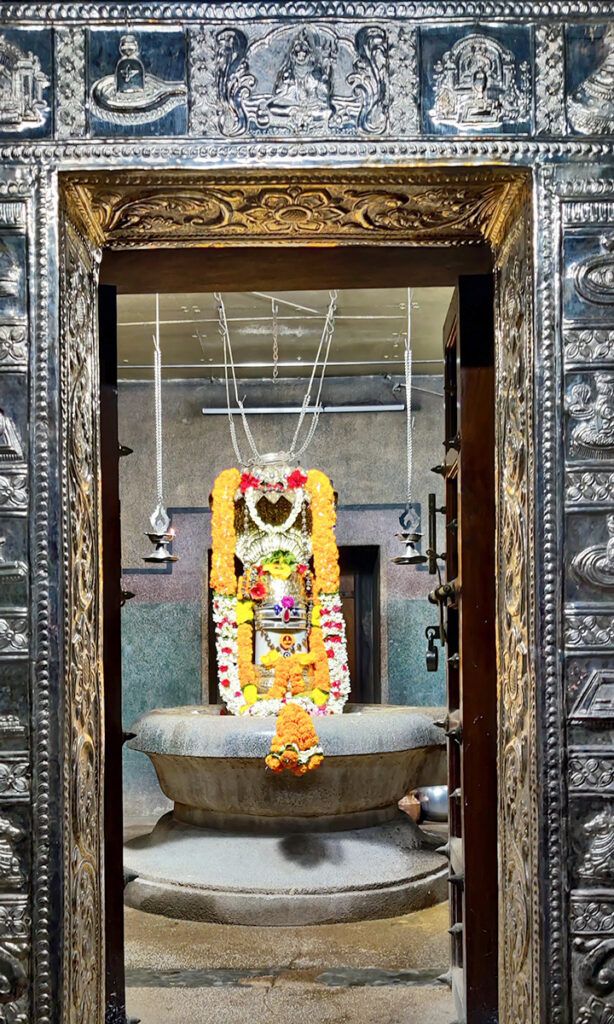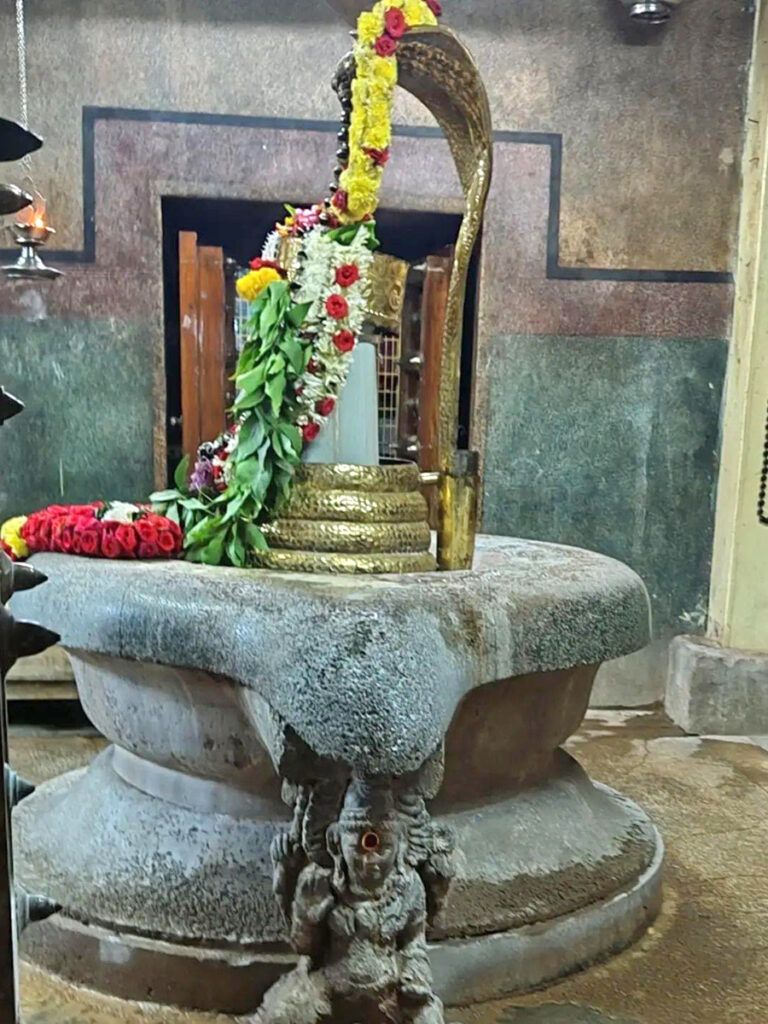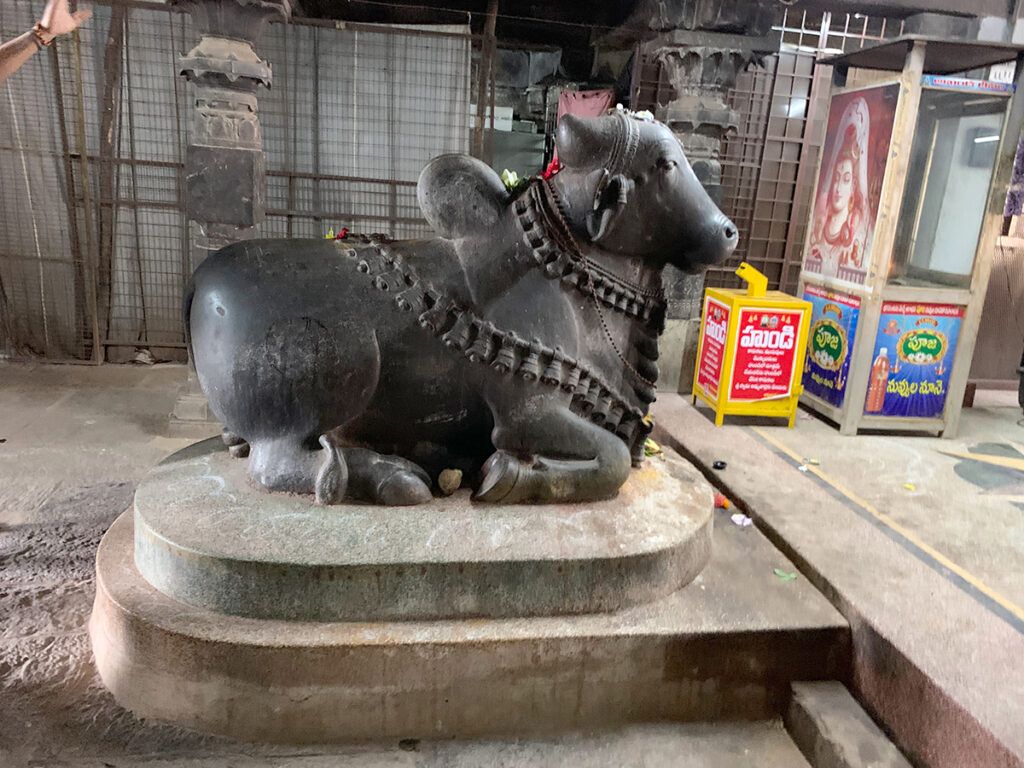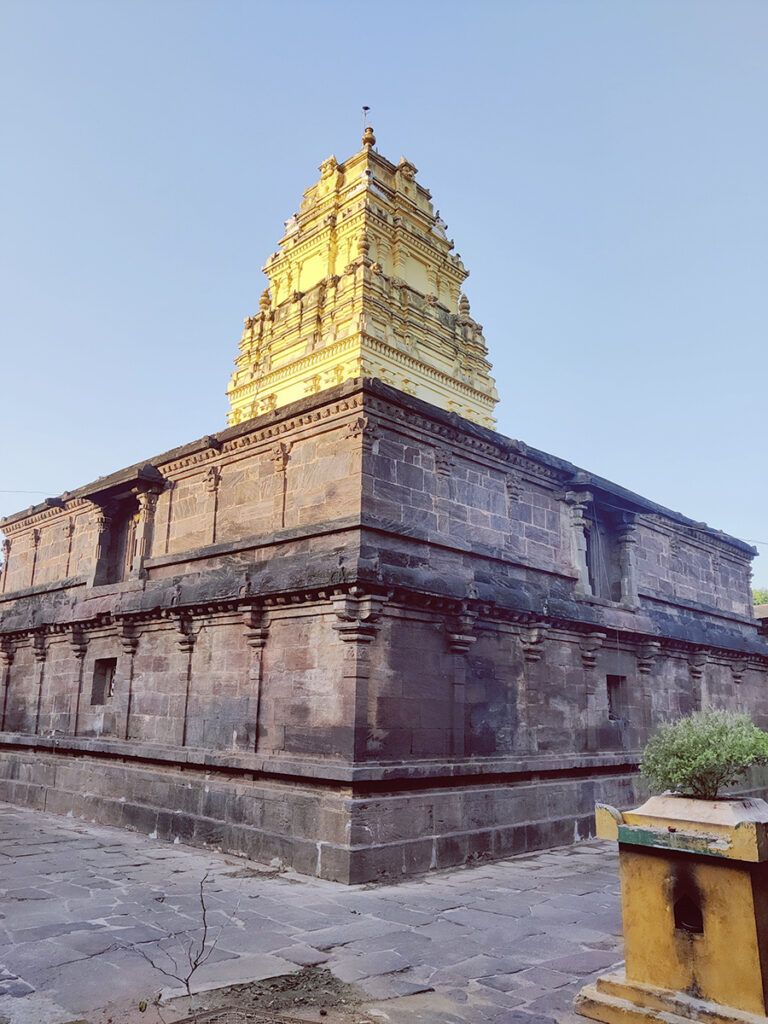Kumararama Bhimeswara Swamy Temple Samarlakota: Sacred 5 Shiva Lingas
The Kumararama Bhimeswara Swamy Temple in Samarlakota, Andhra Pradesh, India, is a Hindu temple dedicated to Lord Shiva. It is one of the five Pancharama Kshetras, which are sacred to the Hindu god Shiva. The other four Pancharama Kshetras are Amaravathi, Draksharama, Ksheerarama, and Somarama.

The Kumararama Bhimeswara Swamy Temple was built in the 9th century CE by the Eastern Chalukyan king, Chalukya Bhima-I. The temple is a Dravidian style temple and is known for its intricate sculptures and architecture. The main shrine of the temple houses a Shiva Linga, which is believed to be one of the five Pancharama Lingas.
The Kumararama Bhimeswara Swamy Temple is a popular pilgrimage site for Hindus from all over India. It is believed that worshiping Lord Shiva in this temple can grant all wishes and desires. The temple also celebrates a number of festivals throughout the year, including Maha Shivaratri, Navaratri, and Karthika Maasa.
Contents
- 1 Legend of Kumararama Bhimeswara Swamy Temple:
- 2 The architecture of Kumararama Bhimeswara Swamy Temple:
- 3 Places to visit near Kumararama Bhimeswara Swamy Temple:
- 4 FAQ:
- 4.0.1 What is the Kumararama Bhimeswara Swamy Temple?
- 4.0.2 What is the history of the Kumararama Bhimeswara Swamy Temple?
- 4.0.3 What are the myths associated with the Kumararama Bhimeswara Swamy Temple?
- 4.0.4 What are the main features of the Kumararama Bhimeswara Swamy Temple?
- 4.0.5 What are the important festivals celebrated at the Kumararama Bhimeswara Swamy Temple?
- 4.0.6 How to reach the Kumararama Bhimeswara Swamy Temple?
- 4.0.7 What are the facilities available at the Kumararama Bhimeswara Swamy Temple?
- 4.0.8 What is the dress code for the Kumararama Bhimeswara Swamy Temple?
- 4.0.9 What is the best time to visit the Kumararama Bhimeswara Swamy Temple?
- 4.0.10 Is there an entrance fee for the Kumararama Bhimeswara Swamy Temple?
- 4.0.11 Are there any other temples or tourist attractions near the Kumararama Bhimeswara Swamy Temple?
- 5 How to reach Kumararama Bhimeswara Swamy Temple:
- 6 Google Maps:
Legend of Kumararama Bhimeswara Swamy Temple:
According to legend, the temple is located on the spot where the Linga installed by Kumaraswamy, the son of Lord Shiva and Parvati, fell to the ground. The Linga is said to have been broken into five pieces, and the other four pieces are located at the other four Pancharama Kshetras.
The temple is a large and complex structure, with a number of different features. The main shrine houses a Shiva Linga, which is believed to be one of the five Pancharama Lingas. The temple also has a number of other shrines dedicated to other Hindu deities, including Parvati, Vishnu, and Hanuman.
The temple is a popular pilgrimage site for Hindus from all over India. It is believed that worshiping Lord Shiva in this temple can grant all wishes and desires.
Read More>> Tirumala Tirupati Venkateswara Swamy

The architecture of Kumararama Bhimeswara Swamy Temple:
- Gopuram: The temple’s main entrance features a towering gopuram, which is a monumental, ornate, and sculpted gateway tower. The gopuram is intricately designed and adorned with sculptures of deities, mythological figures, and other decorative motifs.
- Prakara Wall: The temple is enclosed by a high prakara wall, which serves as a protective boundary around the temple complex. The wall is decorated with various sculptures and carvings.
- Mandapams: The temple complex has several mandapams (halls) where religious rituals and ceremonies take place. These mandapams are often adorned with beautifully carved pillars and intricate sculptures.
- Sanctum Sanctorum: The main sanctum sanctorum, or garbhagriha, houses the presiding deity, Lord Shiva, in the form of a lingam (an abstract representation of the god). The innermost sanctum is considered the most sacred part of the temple.
- Vimana: The temple has a vimana, which is the tower above the sanctum sanctorum. The vimana is a distinctive feature of South Indian temple architecture and is typically pyramid-shaped and adorned with ornate sculptures.
- Sculptures: The temple is renowned for its intricate and finely detailed sculptures. These sculptures depict various Hindu gods and goddesses, celestial beings, mythological stories, and intricate designs.
- Kalyana Mandapam: The temple complex often includes a Kalyana Mandapam, a hall used for conducting marriage ceremonies of the deities. It is adorned with exquisite sculptures and is an important part of the temple’s architecture.
- Courtyards: The temple complex may have several courtyards where devotees can gather for religious ceremonies and festivals.
Read More>> Shani Shingnapur: Only Village With no Doors to Houses

Places to visit near Kumararama Bhimeswara Swamy Temple:
Draksharama Temple: Draksharama is another important temple in the vicinity, dedicated to Lord Shiva. It’s about 15 kilometers from Kumararama Bhimeswara Swamy Temple and is known for its architectural and historical significance.
Annavaram: Annavaram is a renowned pilgrimage center located about 45 kilometers from Samalkot. It’s famous for the Sri Veera Venkata Satyanarayana Swamy Temple, which is dedicated to Lord Satyanarayana Swamy. The temple is situated on a hill and offers picturesque views of the surrounding area.
Kakinada: Kakinada is a coastal city located around 20 kilometers from Samalkot. You can visit the beautiful Kakinada Beach, enjoy the serene Uppada Beach, or explore the various parks and landmarks in the city.
Rajahmundry: Located approximately 50 kilometers from Samalkot, Rajahmundry is a major city in Andhra Pradesh. You can visit the Godavari Bridge, Dowleswaram Barrage, and Kotilingeswara Temple in Rajahmundry.
Maredumilli: If you’re interested in nature and forests, Maredumilli is a beautiful destination about 100 kilometers away from Samalkot. It’s known for its lush greenery, waterfalls, and the Maredumilli Eco-Tourism Project, which offers various eco-tourism activities.
Papi Kondalu: Papi Kondalu, or Papi Hills, is a scenic gorge on the Godavari River, located about 100 kilometers from Samalkot. You can take a boat ride through the hills and enjoy the breathtaking natural beauty.
Coringa Wildlife Sanctuary: This wildlife sanctuary, around 20 kilometers from Kakinada, is a great place for bird watching and observing a variety of wildlife, including the critically endangered white-backed vulture.
Uppada Handloom Village: If you’re interested in traditional handloom textiles, Uppada village, near Kakinada, is known for its exquisite handwoven sarees. You can visit the weaver’s homes and buy some of the finest Uppada silk sarees.
Read More>> Shree Somnath Jyotirling Temple: The Shrine of Eternal Light

FAQ:
What is the Kumararama Bhimeswara Swamy Temple?
The Kumararama Bhimeswara Swamy Temple is a Hindu temple dedicated to Lord Shiva, located in Samarlakota, East Godavari district, Andhra Pradesh, India. It is one of the five Pancharama Kshetras, which are sacred to the Hindu god Shiva.
What is the history of the Kumararama Bhimeswara Swamy Temple?
The temple was built in the 9th century CE by the Eastern Chalukya king, Bhima I.
What are the myths associated with the Kumararama Bhimeswara Swamy Temple?
According to legend, the temple is located on the spot where the Linga installed by Kumaraswamy, the son of Lord Shiva and Parvati, fell to the ground. The Linga is said to have been broken into five pieces, and the other four pieces are located at the other four Pancharama Kshetras.
What are the main features of the Kumararama Bhimeswara Swamy Temple?
The main shrine houses a Shiva Linga, which is believed to be one of the five Pancharama Lingas. The temple also has a number of other shrines dedicated to other Hindu deities, including Parvati, Vishnu, and Hanuman.
What are the important festivals celebrated at the Kumararama Bhimeswara Swamy Temple?
The most important festival celebrated at the temple is Maha Shivaratri, which is a festival dedicated to Lord Shiva. The festival is celebrated every year in February or March. Other important festivals celebrated at the temple include Shivaratri, Navaratri, and Karthika Maasa.
How to reach the Kumararama Bhimeswara Swamy Temple?
The temple is located in Samarlakota, which is about 11 kilometers from Kakinada, the district headquarters. The temple is well connected by road and rail. The nearest airport is in Visakhapatnam, which is about 200 kilometers from Samarlakota.
What are the facilities available at the Kumararama Bhimeswara Swamy Temple?
The temple has a number of facilities available for pilgrims, including accommodation, food, and medical care. The temple also has a number of souvenir shops where pilgrims can buy religious items.
What is the dress code for the Kumararama Bhimeswara Swamy Temple?
Pilgrims are expected to dress modestly when visiting the temple. Men should wear a dhoti or pants and shirt, and women should wear a sari or salwar kameez.
What is the best time to visit the Kumararama Bhimeswara Swamy Temple?
The best time to visit the temple is during the winter months (October to March), when the weather is pleasant. However, the temple is open to visitors all year round.
Is there an entrance fee for the Kumararama Bhimeswara Swamy Temple?
No, there is no entrance fee for the temple.
Are there any other temples or tourist attractions near the Kumararama Bhimeswara Swamy Temple?
Yes, there are a number of other temples and tourist attractions near the Kumararama Bhimeswara Swamy Temple, including the Samarlakota Museum, the Avulavaripalem Temple, and the Draksharama Temple.

How to reach Kumararama Bhimeswara Swamy Temple:
By Air:
The nearest major airport to Kumararama Bhimeswara Swamy Temple is Rajahmundry Airport (RJA), which is approximately 50 kilometers away from the temple. After reaching the airport, you can hire a taxi or take a bus to reach the temple.
By Train:
The nearest railway station to the temple is Samalkot Junction (SLO), which is well-connected to major cities in Andhra Pradesh and other parts of India. Once you reach Samalkot Junction, you can hire a taxi or take a local bus to reach the temple. The temple is about 2 kilometers from the railway station.
By Road:
If you prefer traveling by road, you can reach Samalkot town by bus or hire a taxi from nearby cities like Rajahmundry, Kakinada, or Vishakapatnam. Samalkot is well-connected by road, and the temple is located in the heart of the town, making it easy to find.
Local Transportation:
Once you reach Samalkot, you can hire an auto-rickshaw or a taxi to take you to the Kumararama Bhimeswara Swamy Temple. It’s a short ride from the railway station or the bus stand.
